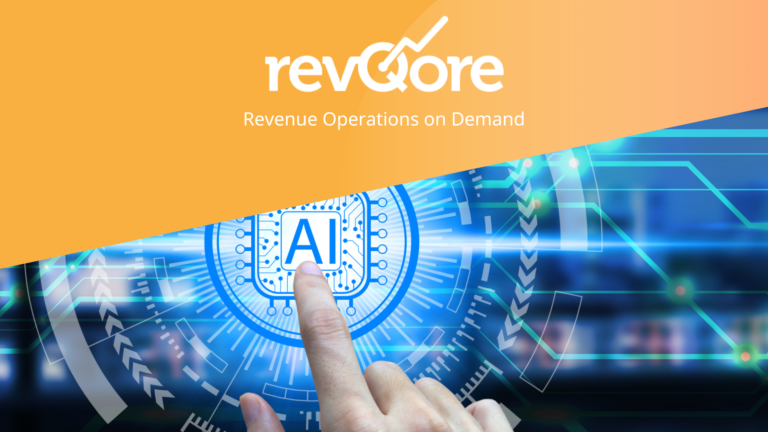“Revenue Operations (RevOps) is an integrative device that drives strategic and operational alignment, integration, and collaboration across Go-To-Market (GTM) functions using data and insights, processes, systems and enablement to deliver the desired business impact and customer experience” (Ahmad, 2023).
The balanced deployment of RevOps works at a peer level, not superior or subordinate level to other functions. This is to ensure that RevOps is equally empowered and able to address both short and long-term initiatives while managing daily operations.
A peer level deployment of RevOps will become crucial for successfully integrating Automation and AI into any go-to-market operations.
RevQore is increasingly seeing questions from organisations about whether AI is the solution to some of their challenges. As AI continues to evolve and reshape how we do things, organisations are eager to understand its potential impact, but often struggle with where to start or how to ensure it aligns with their long-term commercial strategy.
We believe AI can deliver effective results, but it requires thoughtful planning—starting with a clear understanding of the specific challenges it’s meant to solve and a solid grasp of what AI can do – at this point in time anyway.
What is it?
- Artificial Intelligence (AI) refers to a field of study and a type of technology focused on creating machines capable of performing tasks that typically require human intelligence.
- “All of the machine learning models develop and advance statistical predictions but differ in their use and comprehension of data.”
- There are several different machine learning models e.g. reinforcement learning, supervised and unsupervised learning, computer vision, natural language processing and deep learning.
What can it do?
As of today, AI can be placed in two broad categories:
(1) Narrow AI: developed to perform a narrow/specific task e.g. facial recognition, internet searches, driving a car.
Narrow AI does not possess consciousness, genuine understanding, or broader cognitive abilities of humans. It operates under a limited set of constraints and contexts. The term generative AI is a subset of Narrow AI, with a focus on creating new content e.g. text, images, music, video. This is the category where the tools and tech stack applications we see most are sitting. Siri and ChatGPT are wide known examples of NAI.
(2) General AI: designed to understand, learn, and apply knowledge in a way that is indistinguishable from a human. It does not exist yet (perhaps thankfully!).
Biggest Challenges
The two biggest challenges we currently face with Narrow AI are:
- Hallucinations – be cautious with the outputs as it requires human governance
- Unrepresentative sources of data – the data is largely produced by a section of population in NA and Europe – so AI systems reflect a narrow worldview.
AI vs. Automation
So, when is it AI and when is Automation?
AI and automation are often intertwined because both involve using technology to perform tasks traditionally done by humans. Here is how they differ:
While automation executes predefined workflows, AI would learn, and act based on new information, making it more capable of independent decision-making:
- Automation follows rule-based, repetitive instructions to complete specific tasks without variation.
- AI learns from data, improves over time, and can make decisions beyond its initial programming.
AI and Automation in RevOps
AI and Automation offers new ways to enhance performance and streamline operations.
AI Applications
- Revenue Forecasting Analysing historical data to predict future performance
- GTM Lead Scoring: Predict which leads are more likely to close. Lead Research. Account Planning: Identify the accounts most likely to purchase. Cross-Selling/Upselling: Uncover opportunities from customer data. Chatbots: Support customer service teams and guide prospects through the buying process
- Sales Performance Training and coaching
- Content Creation
Automation is already a critical component in RevOps for improving efficiency and reducing manual tasks. Some common applications include:
Automation Examples
- Lead Routing
- Lead Nurturing Personalised email campaigns at scale
- Data Entry Automated input into CRM systems
At RevQore, we believe a “Data first, then AI” approach is key to any successful AI deployment. This philosophy emphasises the importance of ensuring that your data is well-structured and reliable first. Without clean and accurate data, any AI-driven outputs may be flawed or misleading.
If you’d like to discuss this topic further we are happy to learn and exchange ideas!
References
Ahmad, T. H (2023) Defining Revenue Operations: An Executive Summary, Research Gate.
https://www.leapwork.com/blog/ai-and-automation-what-is-the-difference
https://revops.fyi/en/blog/the-future-of-revenue-generation-ai-and-revops-in-action
